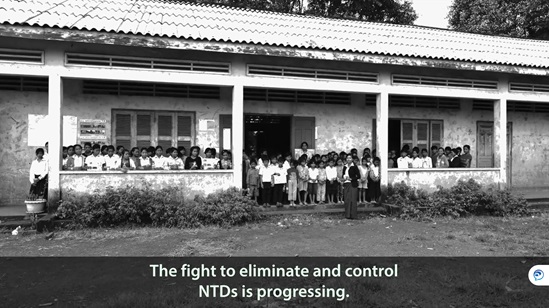Snakebite envenoming
Snakebite envenoming is a potentially life-threatening disease that typically results from the injection of a mixture of different toxins (“venom”) following the bite of a venomous snake. Envenoming can also be caused by having venom sprayed into the eyes by certain species of snakes that have the ability to spit venom as a defence measure.
Snake antivenoms are effective treatments to prevent or reverse most of the harmful effects of snakebite envenoming and are included in the WHO list of essential medicines. Most deaths and serious consequences from snake bites are entirely preventable by making safe and effective antivenoms more widely available and accessible, and raising awareness on primary prevention among communities and health workers.
The snake species implicated in serious snakebite injury vary from region to region, a fact that increases the challenge of mitigating the burden of snakebite worldwide. Various species of venomous snakes are present in the Western Pacific with variations between and within countries. This diversity is partly attributable to biodiversity in the region. Throughout the rest of tropical Asia, a similar cohort of culprits occurs, and cobras (Naja ssp.), kraits (Bungarus ssp.) and Russell’s vipers (where they occur) are responsible for the lion’s share of serious bites.
In Papua New Guinea, the taipan (Oxyuranus scutellatus) is responsible for the most bites, followed by the death adders (Acanthophis spp.). Both groups of snakes occur also in parts of Australia, but bites in that country are very rare. The two major challenges facing snakebite response in the Western Pacific Region include: 1) inadequate mapping of snakebite envenoming; and 2) availability of antivenoms.
Bites or sprayed venom from venomous snakes can cause a range of acute and serious medical emergencies. Envenoming from different types of snakes can cause different symptoms, some more serious than others. This makes the preparation of correct antivenoms an ongoing problem.
Envenoming can cause severe paralysis that may prevent breathing, making immediate medical attention critical. People may also experience bleeding disorders that can lead to fatal haemorrhages or irreversible kidney failure. Severe local tissue destruction may also occur, which can lead to permanent disability and even limb amputation. Children are at higher risk of severe effects due to lower body mass than adults.
Most deaths and serious consequences from snake bites are entirely preventable by making safe and effective antivenoms more widely available and accessible, particularly in high-risk areas. High-quality snake antivenoms are the only effective treatment to prevent or reverse most of the venomous effects of snake bites.
Snake antivenoms are effective treatments to prevent or reverse most of the harmful effects of snakebite envenoming and are included in the WHO list of essential medicines. The availability and accessibility of these antivenoms, along with raising awareness on primary prevention methods among communities and health workers, are the best ways to limit serious consequences and deaths from snakebite envenoming.
After a bite by a snake suspected of being venomous, follow these steps:
- Immediately move away from the area where the bite occurred.
- Remove anything tight from around the bitten part of the body to avoid harm if swelling occurs.
- Reassure the victim, as most venomous snake bites do not cause immediate death.
- Immobilize the person completely and transport the person to a health facility as soon as possible
- Applying pressure at the bite site with a pressure pad may be suitable in some cases.
- Avoid traditional first aid methods or herbal medicines.
- Paracetamol may be given for local pain (which can be severe).
- Vomiting may occur, so place the person on their left side in the recovery position.
- Closely monitor airway and breathing and be ready to resuscitate if necessary.






